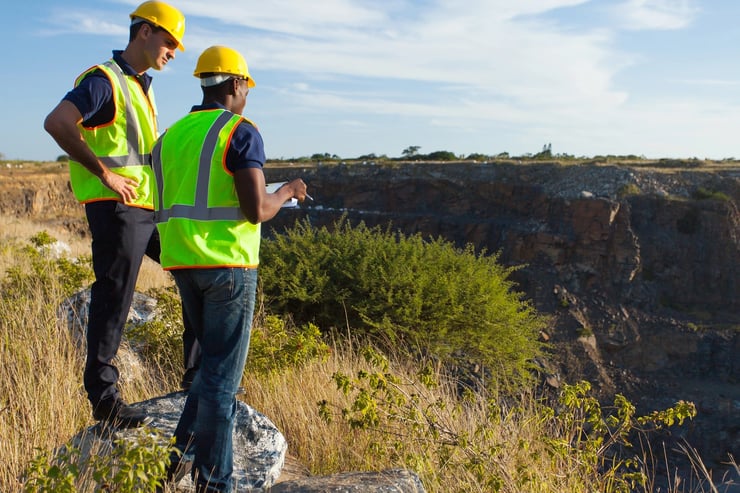
Listen to the audio version
Clean energy is growing big and strong, but where do we find a place to put it?
Clean Energy's Life Story
Clean energy has long since exited its infancy. Not only do we possess a number of excellent technologies to help make it happen, but debate over its necessity has fallen dramatically.
According to American Clean Power, “Ninety-three percent of American voters say clean energy is important to the country’s energy future” and “80 percent of Americans believe that clean energy is as reliable or more reliable than traditional generation sources.”
Clearly, if you want to quibble across the aisle, renewable energy and the energy transitionis no longer the right topic. (Sorry, Uncle Frank. You’ll have to find something new to rant about at this year’s Fourth of July picnic.)
Yet widespread agreement over the utility and desirability of, say, solar energy production is not the same thing as widespread ease of implementation.
Why not? Well, there are two main issues: the difficulty of finding potential solar sites in the first place, and the challenge of ensuring from the get-go that there are no environmental issues standing in the way of development. From land use requirements of these solar facilities to finding a site large enough to store the solar panels required to generate enough megawatts, solar plants pose a challenge for land developers.
Recently, Transect had a chance to sit down with PV Magazine – along with another software company in the development space, Paces – to discuss problems and solutions. Before we get to that, though, let’s stop briefly to consider why exactly solar siting is such a pain in the you-know-what.
The Challenges of Solar Siting: Where to Begin?
Yeah, solar energy is awesome. We’ve got endless sunlight (we sure hope so, at least). There exists lots of wide-open land from Colorado and Arizona to countries across the world to house those big, beautiful solar photovoltaic (solar PV) panels. We possess advanced technologies that allow us to harvest rays through solar cells with ever-increasing efficiency. Take THAT climate change! How do you like that for sustainability?! Sorry, almost got carried away there…
The problem is figuring out where to put these amazing systems. It’s simply not as easy as waving your finger around and shouting, “that looks good!” Ground-mounted, utility-scale solar arrays need a lottt of space- and we respect that. Their needs and boundaries are welcome here; this is a safe space. But, that means solar developers have to take a few more steps to find the dream home for their next solar farm.
For decades, the process has involved hours of backbreaking trekking around potential sites to determine their viability, with all the manual labor that accompanies it. This was certainly the case for Transect Cofounder and CEO Robin Laine, the interview notes:
“With an environmental consulting background, ‘hiking boots and field work’ were the nature of the beast for Robin Laine coming out of college at the University of Texas, Austin, examining the environmental impact of power plants in various use cases and local environments.”
But this takes time, and there’s a land race on – meaning lots of other folks are shouting and finger-waving as well – and there are any number of hurdles you have to clear before development. These include:
-
Environmental challenges: Where is the solar site located in relation to wildlife areas, preserves, wetlands, and other waterways, and so forth?
-
Geography: Does the terrain itself pose any challenges that might make development unviable?
-
Tribal and public considerations: Will a solar installation or other energy production plant create a nuisance or infringe on the rights of tribes or American citizens?
-
Social justice: Is this a “fair” place to develop? Does it meet the social justice requirements of legislation such as the Inflation Reduction Act (IRA), and will it serve the communities that need clean energy most?
These are tough questions to answer, requiring lots of research from many different sources. That’s why historically, it takes a long time to generate the necessary reports and lock down land, and it’s why we’re facing such a permitting bottleneck today.
Happily, there are solutions. Machine-learning-powered, user-friendly software solutions, at that. PV Magazine was all over it in their recent interview, and at risk of one too many dad jokes, we found it pretty illuminating.

Transect: Making Renewables Possible on a Much Grander Scale
President Biden recently set some pretty hefty energy goals for the next few decades, but there’s no way we’re going to meet them at our current rates of permit approval. Even with tax credit incentives for the development of the solar industry and energy storage systems alike, more innovation is required to get all of these large-scale, community-solar and other energy projects of of the door. It’s exactly this issue that Transect was developed to address, as discussed in the interview.“The way environmental permitting is right now is not scalable at all,” Laine told PV Magazine, adding that a consulting-based approach that relies on human labor (hello, endless report typing) is wildly inefficient.
She saw this while still working for her old employer, the magazine reports: “Following the 2014 acquisition by Apex Companies of Southwest Geoscience, where Laine directed its natural resources business, Laine identified numerous inefficiencies for a scalable project development cycle early in the process, pointing to overlap between environmental research and administrative paperwork usually performed by attorneys.”
With a software system, though, we can consider projects on a much grander scale, Laine says: “Now we have IRA goals of developing renewables on a land size the equivalent of South Dakota.”
Automated Project Permitting Creates More Opportunity
It all comes down to automation. Slow human research, paperwork, and pipelining will never get us where we need to be by 2050. But AI-powered software can.
“Using environmental data and advances in artificial intelligence, Transect’s automated project permitting system helps developers and utility stakeholders alike find the right site locations for construction of solar projects and perform various due diligence processes,” reports PV Magazine, adding that:
“The energy communities piece of the IRA, where new DG projects are deployed in regions with decommissioning baseload power assets such as coal, provide a good use case for Transect’s system in brownfield developments where installations can receive an additional 10 percent federal credit in addition to the 30 percent solar ITC and 30 percent standalone storage credit, among other credits.”
In other words, Transect makes it very easy to tell if a promising piece of land will work. That saves you oodles of time and resources, because you don’t have to move forward with a site until you’re sure it will work.
… but how do you find the site in the first place?

Tackling the 80 Percent Project Failure
Unfortunately, most projects don’t make it, and that starts at the very inception. As James McWalter noted in the same interview, “Project development is growing quickly but 80 percent of U.S. renewable projects fail because they are built in the wrong places, costing $17 billion per year in project siting costs,” he said.
That’s a lot of money, and with companies today striving to save money on renewables development, the crapshoot approach is a distinctly unappealing one.
However, using a system like Transect dramatically decreases the necessity to play Russian roulette with sites. Instead, you can put in the site’s details, run a quick search that collates information from local, regional, state, and federal databases, and have a report in your hand in minutes.
Developers win because they spend less time and money; landowners win because they don’t have to dilly-dally with uncertain projects; and Mother Earth wins because we can create more clean energy development faster.
Sounds pretty good, right?
Learn More About Your Solar Siting Options Today
Are you curious to learn more about how you can slim down the due diligence process to a matter of minutes rather than weeks or even months – and save money doing it? Transect is here to help.
Our cutting-edge desktop report generator uses machine learning to give you the most accurate information in the shortest amount of time, no middlemen needed. Say goodbye to the tiresome environmental consulting game today with our simple system. We’d love to show you how it works with a demo, so feel free to get in touch at any time!

